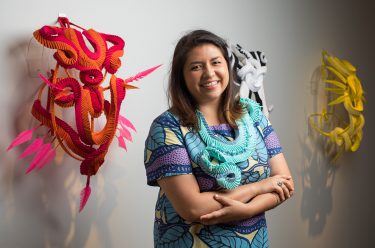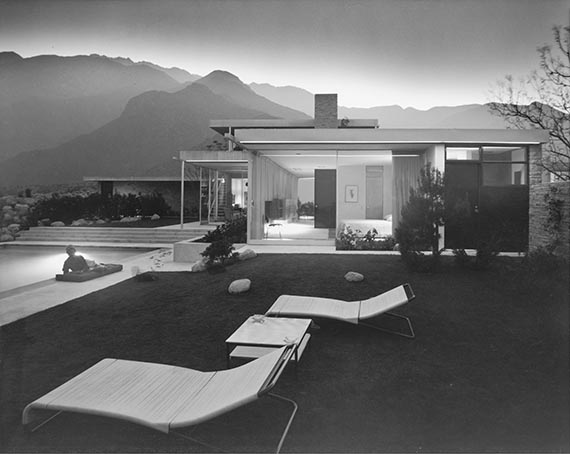
‘California Design 1930–1965: Living in a Modern Way’ introduces Australian audiences to a spectrum of industrial, architectural, commercial fashion and craft design from California for the first time. While previous exhibitions, such as ‘Modern Times: The Untold Story of Modernism in Australia’, organised by Sydney’s Powerhouse Museum in 2008–09, have considered the influence of American culture on Australia, it is perhaps a little surprising that a comprehensive exhibition has not yet been seen in this country, given the substantial influence of the Californian lifestyle on Australian culture since the 1950s. What is more surprising is that this exhibition from Los Angeles County Museum of Art (LACMA), which surveys the extraordinary postwar innovations in housing, domestic furniture and industrial design that emerged on the west coast from the 1930s onwards, was only recently developed.
The exhibition and its accompanying publication tell the fascinating story of how wartime technologies used to create materials such as plywood, fibreglass and synthetic fabric, went on to play a big role in postwar Californian design of cars, caravans, swimwear, surfboards and seat furniture. The 1936 ‘Clipper’, made by the Airstream Trailer Company of Los Angeles (1932–79), was the first commercially produced caravan made with the same riveted aluminium that featured on aircraft fuselage.
The Clipper was the vision of Wallace Byam (1896–1962) based on designs by William Hawley Bowlus (1896–1967), an aircraft designer who had supervised the construction of Charles Lindbergh’s Spirit of St Louis. Byam’s backyard building hobby grew into an enduring business enterprise as Americans began to turn the camping road trip into a national pastime. By 1934, the Airstream Trailer Company was flourishing and in 1936 the aerodynamic Clipper was introduced. Despite its cost and the austerity of the Depression years, the company could barely satisfy demand for what became an American legend.
The Studebaker Avanti was a revolutionary sports car when it appeared in 1962. Also borrowing from aerospace design principles, the Avanti was uniquely styled to evoke flight, lightness and speed. The design team responsible for the car was led by the well-known industrial designer Raymond Loewy, who had worked as a designer for the Studebaker Corporation since the early 1930s. Despite its appeal, and the demand for this innovative car, the Studebaker Corporation experienced problems and production delays in the manufacture of the fibreglass bodies, resulting in failed delivery to dealers and loss of sales. The Studebaker Corporation ceased production of the Avanti in 1963 but it remains one of America’s classic automobiles.
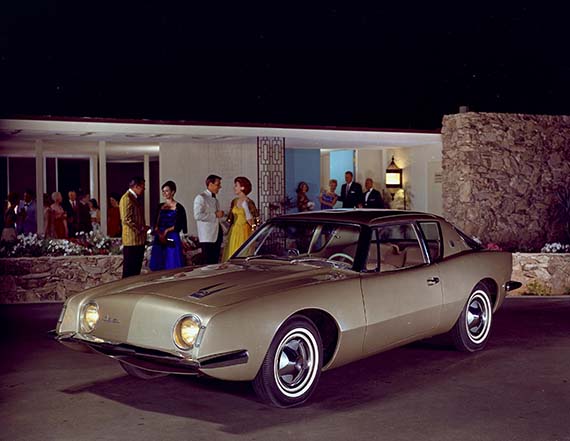
In a recent interview, Los Angeles County Museum of Art (LACMA) curator Bobbye Tigerman, Associate Curator of Decorative Arts and Design, and Wendy Kaplan, Head of the Decorative Arts and Design Department discussed the origins of LACMA’s design collections and the development of the exhibition ‘California Design 1930–1965: Living in a Modern Way’ with David Burnett, Curator, International Art, QAGOMA.
David Burnett | I’m interested in how and when LACMA’s design collections were first developed.
Bobbye Tigerman | Design is a relatively new focus for our department and the museum. Up until the 1990s there was little interest in it as a collection area for the museum. Our department includes both industrial design and studio craft. The first major item to enter that collection was a group of ceramic works in 1973, by potters Gertrude and Otto Natzler, who fled Vienna after the Nazi invasion of Austria in 1938. In the 1980s and 90s an effort was made to consolidate a collection of contemporary studio ceramics and there was a substantial gift of studio glass in the 1980s. When I joined the museum in 2006, Wendy Kaplan, who had been here since 2000, discussed the idea of an exhibition that addressed Californian design. We felt that it was an underestimated field — it was appealing, it was affordable, many of the artists and designers were still living and no other institution in California, or the country generally, had a dedicated Californian design section.
David Burnett | That is quite remarkable. I’m very surprised, given the important developments in the field that took place here in California.
Bobbye Tigerman | Yes, the fact that a show hadn’t been done was unbelievable. We kept looking for the book or catalogue that was some kind of precedent but it wasn’t there. So the collecting started in earnest in 2006. We collected around 150 pieces. It’s not that there was nothing before, but this was really the beginning of a more formalised and systematic collecting strategy.
Wendy Kaplan | The show itself really was a surprise success. It was never intended as a touring exhibition . . . in fact we had to renegotiate loans and storage for nine months before the tour. The exhibition was initially part of ‘Pacific Standard Time’, a broader collaborative project with the Getty Research Institute in 2011, which brought a number of cultural institutions together to present a comprehensive story of the postwar Los Angeles art scene. In terms of the collection, the museum had a decorative arts department and strong holdings of the arts and crafts movement, but the decision to collect modern and contemporary design is a recent development. We have tried to map key moments in Californian and international design, particularly from the Netherlands and Japan.
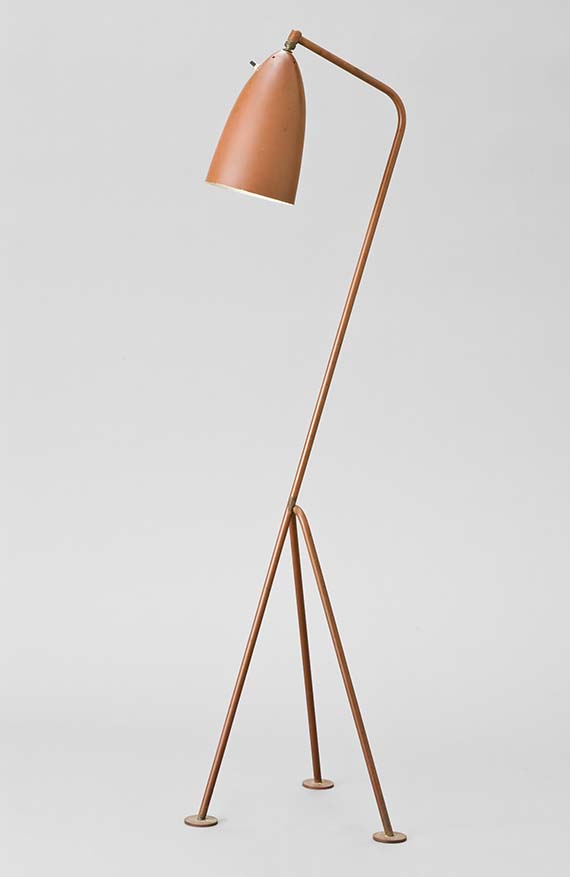
David Burnett | It’s interesting that the kernel of the collection grew out of collecting individual pieces by designer craftspeople, followed by the realisation that the design parameters in California were much broader. The catalogue accompanying the exhibition plays out this idea that, at a certain time, California offered enormous opportunity and potential for both American and émigré designers.
Bobbye Tigerman | Yes, and then there is also that ‘myth’ of California — that in California, anything is possible, all you have to do is imagine your dream and you can realise it. That played into our planning of the show which made it more appealing because it took the inspiration from the designers themselves. In the beginning there was a lot of debate about the criteria and parameters of the show and in the end we decided that the show would fundamentally address domestic design — design for the home. But at the same time we realised that we couldn’t exclude fashion design and graphics because so many of the designers were connected in many ways — they shared office space or exhibited together, so we made a lot of exceptions to our rule and explored the role that design played in people’s broader lives, outside of the home.
David Burnett | When I arrived at San Francisco airport, I noticed a store selling ceramics, textiles and other goods, called ‘Calstyle’. Is there still a perception that Californian design is somehow separate or a kind of quintessential expression of America generally?
Bobbye Tigerman | I think that when you compare California to the east coast, where there is a tradition and a way to do things — a sort of pecking order — then in California you have the opposite of that: there is that freedom and a drive . . . you can break or bend the rules. There is the quote from author Wallace Stegner that says, ‘California is America, only more so’.
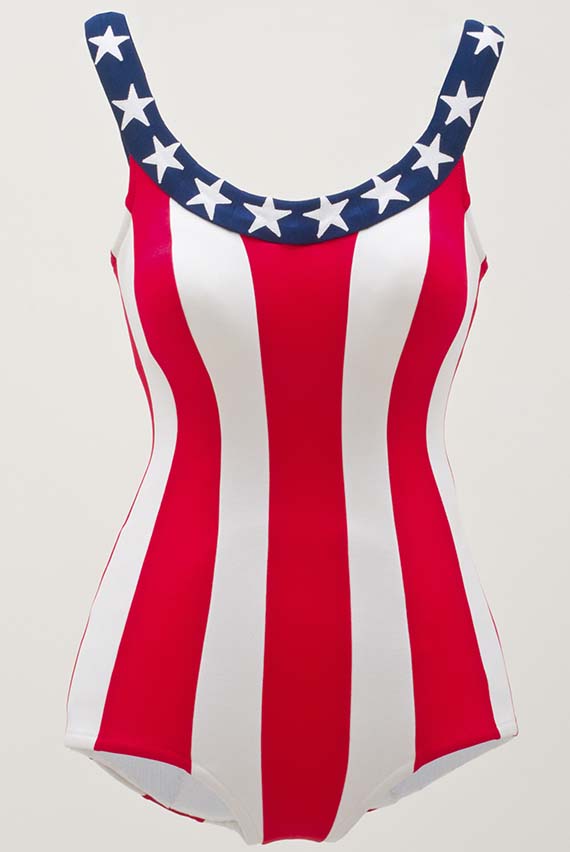
David Burnett | The exciting thing about this exhibition for Australian audiences is the many cross-overs and reflections that can be seen in Australian material culture, from housing and surf culture to the centrality of the car and the notion of an outdoor lifestyle. How did your audiences react after seeing so much of what many would have grown up with, in a museum context?
Bobbye Tigerman | Our installation of the exhibition was quite intense. There was a lot going on, but as we walked through the show every day and kind of ‘eavesdropped’ on comments and conversations, we could sense the familiarity. People were saying, ‘I had that’, ‘my grandmother had those’ or ‘I worked for that designer in the 40s’ — it was amazing and I suspect you will have a similar experience in Australia.
David Burnett | It seems that now, design generally is so much more a part of everybody’s daily life — more so than for those in the 1940s and 50s. Where do you think contemporary Californian design is now?
Bobbye Tigerman | The particular historical ‘moment’ of Californian design, which was characterised by this sense of connectedness and community, I think is over. California’s contribution to design in the second half of the twentieth century has undoubtedly come out of Silicon Valley in the area of computers and software. Beginning with Apple but also now many other companies who have shaped the way we live and interact with each other and the world. I think that when we look back at what California has contributed to the global community, it will be through computers and interface design.
Wendy Kaplan | In fact, one of our major patrons for the collection and the exhibition was Max Palevsky, the co-founder of Intel.
‘California Design 1930–1965: Living in a Modern Way’ is at the Queensland Art Gallery (QAG) until 9 February 2014. An exhibition publication is available for purchase from the QAGOMA Store. When you visit the exhibition, take your picture in our relaxed California Design setting next to the Airstream ‘Clipper’, upload it to Instagram & you could win a Herman Miller Eames® Lounge & Ottoman supplied by Living Edge, Brisbane featured in the ‘California Design 1930–1965: Living in a Modern Way’ Resource Lounge.





